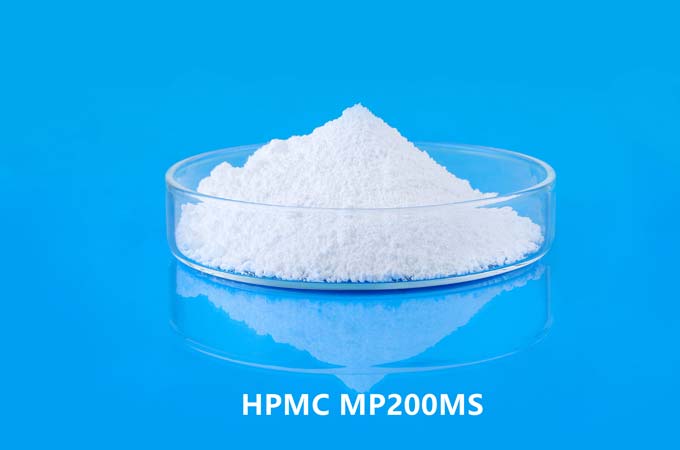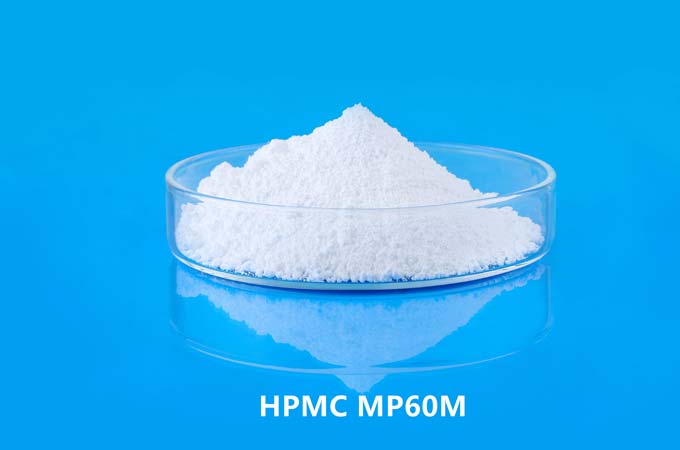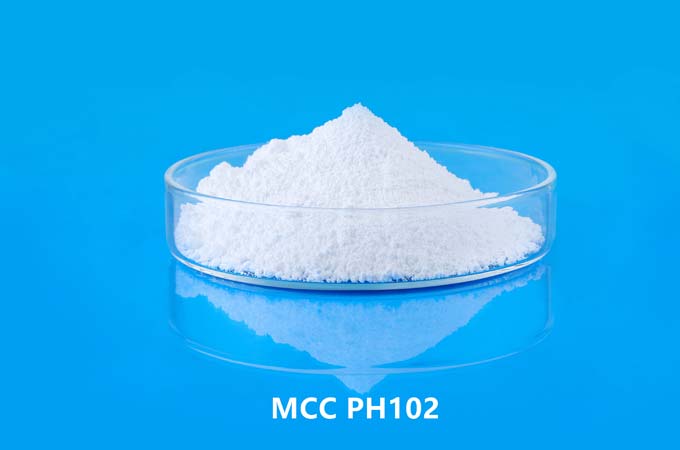1. What is the main use of hydroxypropyl methylcellulose (HPMC)?
HPMC is widely used in building materials, coatings, synthetic resins, ceramics, medicine, food, textiles, agriculture, cosmetics, tobacco and other industries. HPMC can be divided into: construction grade, food grade and medical grade according to use. At present, most domestic construction grades use a large amount of putty powder, about 90% is used to make putty powder, and the rest is used to make cement mortar and glue.
2. There are several HPMC types, and what are their uses?
HPMC can be divided into instant type and hot-soluble type. The instant type product disperses quickly in cold water and disappears in the water. At this time, the liquid has no viscosity because HPMC has just been dispersed in the water and is not truly dissolved. In about 2 minutes, the viscosity of the liquid slowly increases and a transparent viscous colloid is formed. Hot-soluble products can quickly disperse in cold water and disappear in hot water. When the temperature drops to a certain temperature, the viscosity slowly appears until a transparent viscous colloid is formed. Pyrolysis can only be used in putty powder and mortar. In liquid glue and paint, agglomeration will occur and cannot be used. The instant type has a wider application range. It can be used in putty powder and mortar, liquid glue and paint, and has no contraindications.
3. What are the methods for dissolving hydroxypropyl methylcellulose (HPMC)?
Hot water dissolution method: Since HPMC is insoluble in hot water, early HPMC can be evenly dispersed in hot water and quickly dissolved after cooling. Two typical methods are introduced as follows:
1) Put the required amount of hot water into the container and heat it to about 70℃. Gradually add hydroxypropyl methylcellulose under slow stirring. HPMC begins to float on the water surface, and then gradually forms a slurry. Cool the slurry under stirring.
2). Add the required amount of 1/3 or 2/3 water to the container, heat to 70°C, disperse HPMC according to the method in 1), and prepare hot water slurry; then add the remaining amount of cold water to the hot slurry. Stir and cool mixture.
Powder mixing method: HPMC powder and a large number of other powdery material ingredients are fully mixed with a mixer. After adding water to dissolve, HPMC can be dissolved at this time, but cannot agglomerate, because there is only a little bit of HPMC powder in every small corner, and the water will dissolve immediately. ——This method is adopted by putty powder and mortar manufacturers. Hydroxypropyl methylcellulose (HPMC) is used as a thickener and water-retaining agent in putty powder mortar.
4. How to judge the quality of hydroxypropyl methylcellulose (HPMC) simply and intuitively?
(1) Whiteness: Although whiteness does not determine whether HPMC is easy to use, if whitening agents are added during the production process, its quality will be affected. However, good products are mostly white.
(2) Fineness: HPMC fineness is generally 80 mesh and 100 mesh, below 120 mesh. Hebei HPMC is mostly 80 mesh. The finer the fineness, the better.
(3) Light transmittance: Put hydroxypropyl methylcellulose (HPMC) into water to form a transparent colloid. Look at the light transmittance. The greater the light transmittance, the better, and the less insoluble matter inside. The air permeability of vertical reactors is generally better than that of horizontal reactors, but this does not mean that the quality of vertical reactors is better than that of horizontal reactors. Product quality is determined by many factors.
(4) Specific gravity: The larger the specific gravity and the heavier, the better. The ratio is significant, generally because the hydroxypropyl content is high, and the high hydroxypropyl content means better water retention.
5. How much hydroxypropyl methylcellulose (HPMC) is used in putty powder?
The dosage of HPMC in actual applications varies depending on the climate environment, temperature, local calcium ash quality, putty powder formula and "customer-required quality". Generally speaking, between four and five kilograms. For example: in Beijing, most putty powder is 5 kilograms; in Guizhou, it is 5 kilograms in summer and 4.5 kilograms in winter. The quantity in Yunnan is smaller, generally 3kg-4kg, etc.
6. What is the appropriate viscosity of hydroxypropyl methylcellulose (HPMC)?
Putty powder usually costs RMB 100,000, while mortar has higher requirements and costs RMB 150,000 before it can be used. And the most important function of HPMC is water retention, followed by thickening. In putty powder, as long as it has good water retention and low viscosity (70,000-80,000), it is also acceptable. Of course, the greater the viscosity, the higher the relative water resistance.
The water retention is good. When the viscosity is greater than 100,000, the viscosity has little effect on the water retention.
7. What are the main technical indicators of hydroxypropyl methylcellulose (HPMC)?
Hydroxypropyl content and viscosity, most users are concerned about these two indicators. The hydroxypropyl content is high and the water retention is generally good. The viscosity and water retention are relatively (but not absolutely) better, and its high viscosity makes it easier to use in cement mortar.
8. What are the main raw materials of hydroxypropyl methylcellulose (HPMC)?
The main raw materials of hydroxypropyl methylcellulose (HPMC): refined cotton, methyl chloride, propylene oxide, other raw materials, granulated alkali, acid, toluene, isopropyl alcohol, etc.
9. What is the main role of HPMC in the application of putty powder? Is it chemical?
HPMC has three major functions in putty powder: thickening, water retention and construction. Thickening: Cellulose can thicken and suspend the solution, keeping the solution uniform up and down and preventing sagging. Water retention: Make the putty powder dry more slowly and assist the gray calcium to react under the action of water. Workability: Cellulose has a lubricating effect, which makes the putty powder have good workability. HPMC does not participate in any chemical reactions and only plays an auxiliary role. Adding water to putty powder on the wall is a chemical reaction, because new substances are generated. The putty powder on the wall comes off the wall, is ground into powder, and then used, it is no longer used because new materials (carbonic acid) have been formed. calcium). The main components of calcium ash powder are: Ca(OH)2, CaO and a small amount of CaCO3 mixture, CaO+H2O=Ca(OH)2 - Ca(OH)2+CO2=CaCO3↓+H2O Calcium ash in water and air under the action of CO2 , forming calcium carbonate, while HPMC only retains water and assists the calcium ash to react better, and does not participate in any reaction itself.
10. HPMC non-ionic cellulose ether, so what is non-ionic?
Generally speaking, non-ions refer to substances that do not ionize in water. Ionization is the process by which electrolytes dissociate into free-moving charged ions in a specific solvent, such as water or alcohol. For example, sodium chloride (NaCl), the salt we eat every day, dissolves in water and ionizes, producing positively charged, free-moving sodium ions (Na+) and negatively charged chloride ions (Cl). In other words, HPMC does not dissociate into charged ions in water, but exists in molecular form.
11. What is the gel temperature of hydroxypropyl methylcellulose related to?
The gel temperature of HPMC is related to its methoxy group content. The lower the methoxy group content↓, the higher the gel temperature↑.
12. What is the relationship between putty powder and HPMC?
The quality of putty powder has a lot to do with the quality of calcium, while HPMC has little to do with it. If the calcium content is too low and the ratio of CaO and Ca(OH)2 in the calcium ash is inappropriate, powder will fall off. If it is related to HPMC, HPMC has poor water retention and will also cause powder loss. Please see question 9 for specific reasons.
13. What is the difference in the production process between cold water-soluble type and hot-soluble type of hydroxypropyl methylcellulose?
HPMC cold water-soluble type is quickly dispersed in cold water after surface treatment with glyoxal, but it does not actually dissolve. The viscosity rises, that is, it dissolves. The hot melt type is not surface treated with glyoxal. Glyoxal is large in size and disperses quickly, but has a slow viscosity and small volume, and vice versa.
14. Why does hydroxypropyl methylcellulose (HPMC) smell?
HPMC produced by the solvent method is made with toluene and isopropyl alcohol as solvents. If not washed well, there will be some residual smell.
15. How to choose the appropriate hydroxypropyl methylcellulose (HPMC) for different uses?
Application of putty powder: The requirements are lower, the viscosity is 100,000, the important thing is that the water retention is better. Application of mortar: higher requirements and high viscosity, 150,000 should be better. Glue applications: require instant products with higher viscosity.
16. What is the other name of hydroxypropyl methylcellulose?
Hydroxypropyl methylcellulose, English: Hydroxyryl Mmethyl Cellulose Abbreviation: HPMC or MHPC Alias: Hydroxypropyl methylcellulose; Cellulose hydroxypropyl methyl ether; Cellulose hydroxypropyl methyl ether hydroxypropyl methylcellulose , 2-Hydroxypropylmethylcellulose ether. Cellulose Hydroxypropyl Methyl Ether Hydroxypropyl Cellulose.
 English
English 日本語
日本語 français
français Deutsch
Deutsch Español
Español italiano
italiano русский
русский português
português العربية
العربية Türkçe
Türkçe Nederland
Nederland



